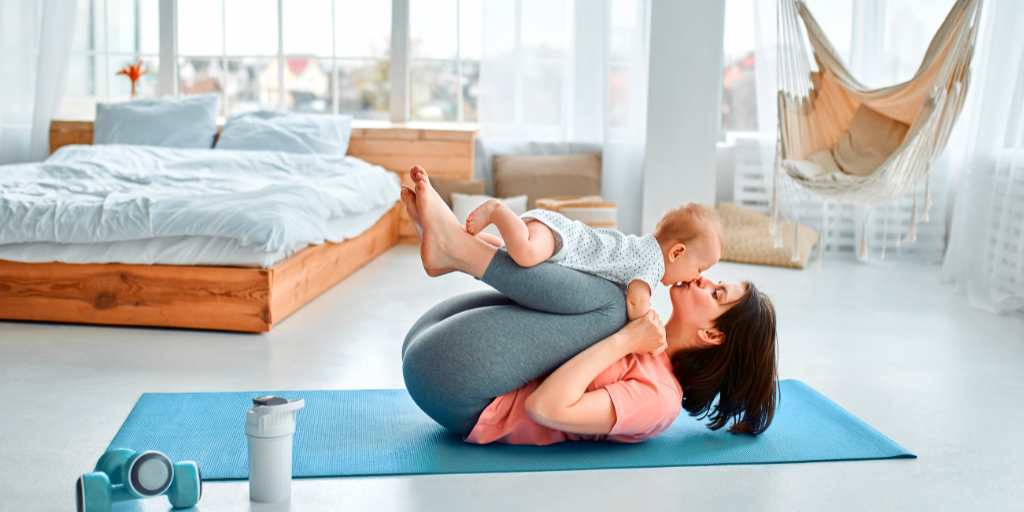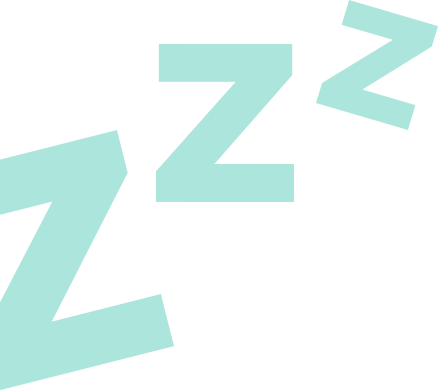12 Of The Best Exercises To Do at Home For New Mums
How to work out at home when you have just had a baby
Whether you were a committed athlete or a reluctant exerciser before you had your baby, once your little bundle of joy has arrived, it’s time to take your wellbeing in hand and get back to some activity. It can be difficult to find the time to join a gym or go to a class when you have a newborn, so here are some activities you can do at home to get you back in shape.
Before You Get Started
If you have had a normal vaginal delivery, you can start to exercise after the birth of your baby when you feel able. There’s no right or wrong time if you had a straightforward birth but do take it easy at first and don’t push yourself. If you had a more difficult delivery, or you needed stitches or a Caesarean, you should wait until after your six-week check-up before beginning any exercises, with the exception of gentle walks and a few stretches. Either way, you should leave more intense exercise like running until after six weeks.
Postpartum Health
You want to get back to feeling like ‘you’ after the birth of your little one but do pay attention to some potential risks;
- Your lower back has been strained with your pregnancy weight, so don’t over-exert and always protect your back
- Your core abdominal muscles have been stretched and will take a while to go back to their original place. Don’t expect them to ‘ping’ back in place
- Your joints and ligaments became more stretchy as you approached labour, so it’s easy to strain them. Keep within comfortable ranges of movement.
What To Do and Why
Before starting exercise, have a serious think about what you enjoy and how you are going to fit it into your day. This is where nap time can be your friend! In the morning, get you and your baby up and dressed and go about your usual morning routine - but think about putting on your active wear when you get up. That way, as soon as your baby goes down for their first nap of the day, you can quickly take a little exercise break.
Targeted Exercises
Here are some moves you can do anytime to target specific areas of the body. Try to include as many as you can, starting with just a few repeats and building up as you go along.
Deep Breathing with Abdominal Crunches
It sounds a bit scary but don’t worry – this exercise is easy to do, can be done in your bed or on a sofa and starts the process of healing and strengthening your stomach and pelvic floor muscles. Sit comfortably – you may find sitting cross-legged is best – and slowly take in a deep breath through your nose. Then think about your tummy muscles and pull them in towards your spine from your pubic bone to the rib cage as you breathe out fiercely. Increase both the number of times you do this and the length of time you hold your muscles as you go along.
Crunches
First, it’s very important to protect your back, so lie on the floor with knees bent and flatten your spine down to the mat so there is no gap. Then, engaging your tummy muscles, exhale, then lift both head and bent legs from the mat for a few seconds, then replace as you inhale. As you get stronger, lift your shoulders too.
Pelvic Floor Toner
It’s important to get that pelvic floor back to full strength, so this one is ideal for new mums. Kneel on the floor with your arms straight down from your shoulders, shins on the floor. Relax your back, then exhale as you pull your bottom under and in, tilting your pelvis up and rotating your abdomen – your pubic bone should go upwards. Exhale and return to the previous position.
Kegels
As we’re talking about the pelvic floor muscles, do you know where they are? Think about when you are going for a pee – try to stop the flow of urine by tensing your muscles and bingo - those are your pelvic floor muscles! Once you have located them, you can exercise them every day to get them strong and prevent urinary incontinence. While sitting on a bed or chair, engage these muscles and squeeze and hold them. Try to do this ten times and repeat several times per day.
Bridge
Lie on the floor with knees bent and arms loosely to the sides. Start to raise your bottom from the mat (make sure your back is flat on the floor) gradually, one vertebra at a time until you have just shoulders and feet on the mat. This is great for spine mobility, your legs, core and bottom.
Opposite Arm and Leg Reach
Kneeling with hands below shoulders and knees below hips, engage your core muscles and then slowly extend one arm to the front and the opposite leg to the back. Keep everything else completely still! Slowly return them, then swap sides. Try twenty and do more as you improve.
Arm Toners
Do repeats of these arms movements to blitz the dreaded bingo wings. With a set of small hand-held weights, stand with your arms out to your sides. Move your arms in small circles first towards the front, then towards the back. With your arm extended in front, curl your hands in towards your shoulders. Stretch both hands behind you, palms up with arms straight and raise and lower your hands. Place hands straight out to sides, the raise to a clap above your head and lower. Place arms together in front, as if diving, then take elbow out to the side as if rowing. Stretch hands straight out in front, palms up, then touch both hands to shoulders. Repeat each of these ten times.

Full Body Exercises
Yoga
Yoga’s exercise, breath and posture moves are ideal for helping keep your body and limbs supple. You can also strengthen and stretch muscles that have had to adjust to the extra baby weight you have been carrying. Yoga helps with relaxation and includes meditative breathing techniques in addition to being a good all-body exercise. Look for a local teacher who is offering online classes – ideal, as when you’re ready, you can go along to in-person classes, which will help you gain a group of friends too. Alternatively, find a good online class that offers ten-minute session for new mums. You can even do it with your baby beside you! Invest in a good pair of yoga pants to keep you flexible and give your body some support.
Pilates
Pilates uses similar techniques to yoga and was developed to help ballet dancers heal from injury. It aims to help your body get stronger, with an emphasis on your core muscles which is ideal for post-partum mums. Again, an online or local teacher who is experienced with new mums will be your best bet. All you need is a good mat.
Dancing
Strictly fan? There’s a dance style to suit everyone, from disco to street dance, from tango to salsa. If you have danced before pregnancy, you can just carry on, as it’s ideal for your whole body. Dancing helps you maintain and build muscle tone all over and you can focus on crunching your tummy area to help tone it. Put on a music video like the Strictly Fit one, the radio or an online dance class and get moving. Babies love dancing too, so you can do this with your baby beside you and you can take your baby to dance classes when they can toddle.
HIIT
If you’ve not heard of this before, High Intensity Interval Training is a method of exercise that can be completed in a very short period of time and that is, as the name suggests, intense! It’s also great for fitting into your busy day. A good beginners’ HIIT routine would be a minute each of; jogging gently on the spot, star jumps, squats and fast running, with a short period of recovery between each activity. Want to extend the routine? Add sit-to-stand, standing calf raises and knee bends, seated leg kicks, lunges, push-ups and planks.
Find out more about getting fit after having a baby on the NHS website.
Further Reading:
5 of the Best Running Buggies, And Why They're So Great
6 Things to Think About When Going for a Walk While Baby Naps
Top 4 Things to Remember When Exercising as a New Mum







